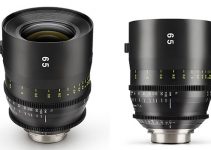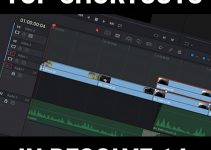The Canon EOS R is a tricky camera. Much maligned on release, largely due to the hefty crop factor when switching into 4k mode and the lack of good slow motion, it has now found some influential proponents online. Now that it is pairing with external recorders like those in the Atomos line, it is having a fresh burst of interest.
In this video, Armando Ferreira explains why the Canon EOS R is now his favourite mirrorless camera.
Armando is a C200 video shooter. The C200 sits in a sweet spot in the Canon Cinema line-up producing a beautiful, sharp image with the coveted Canon colour science and out-the-box simplicity.
The EOS R, according to the filmmaker, is the closest match for the C200 that he has found but at a fraction of the price. 12-bit Raw on the C200 seems to match very nicely, in Armando’s tests, with the 10bit 4:2:2 of the Ninja V, attached to the EOS R.
What else did Armando find? Well, it seems that using the Atoms Ninja V with the EOS also has a huge effect on the sharpness of the image, the improvement is immediately noticeable.
I won’t spend time on the crop factor maths, which sensor equates to which crop and how that’s altered by speedboosters and so on, but it is something important to understand. It’s not just about field of view as the crop factor shouldn’t only be applied the mm measurement of the lens but also the F-stop. That will determine the amount of background blur you can achieve in identical situations and in turn, the lens choices you make.
So what does this mean? Is the EOS R a baby C200? Well yes and no. Picture matching is only one facet of the whole camera that needs to be compared and really it is more of a matching B-camera.
One nice little trick is the Canon Variable ND adapter, giving you built-in ND’s on a stills camera style body. Is it easier than adding a variable ND to the front of the lens? Good question, but it’s an option.
This brings up the most important point about choosing this camera over, say a C200. This is a stills camera form factor. For the moment let’s assume we are considering only video shooters and not worry about shooting photos and ask ourselves why we would choose a stills camera form factor.
I personally love the feel of shooting video with a stills camera. I love the weight in my hand and holding the image close to my eye. I love having so much image potential in such a small package that I can carry all day and not feel exhausted. Generally, the prices are better too.
There will always be some workarounds but for me, they are worth it for the upside. However, this all depends on the kind of shooter you are and the material you are shooting.
The flippy display screen is helpful and the focus guidance, instead of peaking, seems like a cool feature. There is a lot to recommend with the EOS R and when combined with the Atomos recorder the image looks fantastic. Can you live with the 4K crop factor, the lack of slow-motion and the need to add an extra recorder? If not, tell Canon and who knows, maybe the EOS R II will fix those issues.
[source: Armando Ferreira]
Order Links:
Canon EOS R Mirrorless Digital Camera (B&H, Amazon)
Atomos Ninja V 5″ 4K HDMI Recording Monitor (B&H, Amazon)
Disclaimer: As an Amazon Associate partner and participant in B&H and Adorama Affiliate programmes, we earn a small comission from each purchase made through the affiliate links listed above at no additional cost to you.



